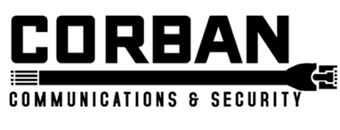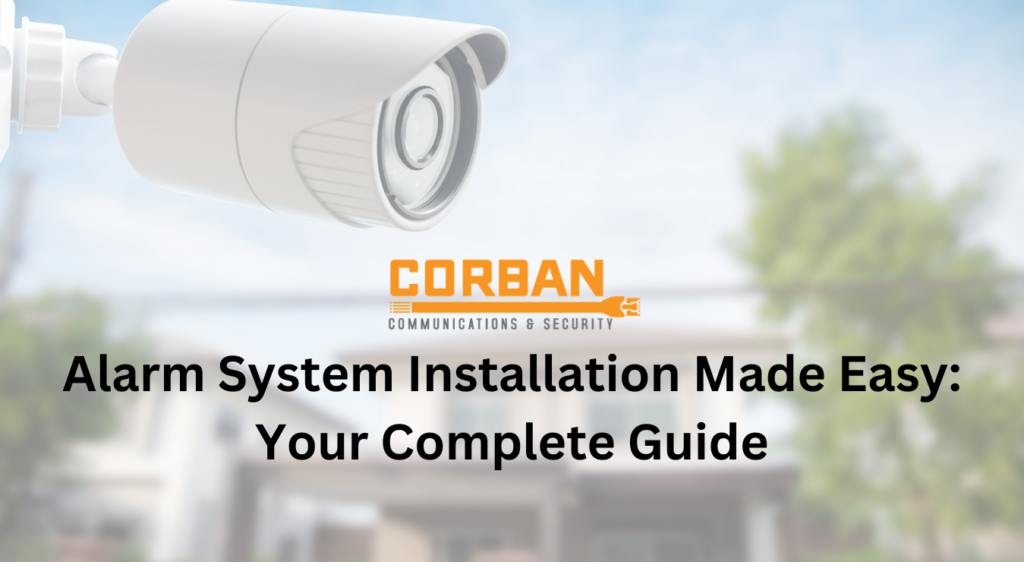Alarm System Installation Made Easy: Your Complete Guide
Ensuring the security of your premises is paramount; alarm system installation hence becomes a non-negotiable necessity.
Selecting the ideal alarm system necessitates understanding the complexities of modern security technologies – expertise that transcends common knowledge.
Choosing the Right Alarm System
Identifying your specific security needs is the cornerstone of any alarm system decision. This requires a granular understanding of your property's layout, the value of assets within, and potential security threats.
Progression to the selection process must incorporate a rigorous analysis of the systems’ features—sensor types, monitoring capabilities, user interface ease, and integration potential are critical factors. The goal is to match technical prowess with situational demands, ensuring a fortified security infrastructure.
Lastly, contemplate the longevity and scalability. Choose systems known for reliability and that offer expansion options to adapt to evolving security requirements.
Assessing Home Security Needs
The initial step is a detailed appraisal of potential risks, taking into account factors such as location, size, and accessibility of your property. Understanding these variables guides the calibration of the alarm system to meet exacting security demands.
Evaluating your property's unique characteristics—its layout, occupancy, and the nature of assets to be protected—is key in creating a bespoke security solution. This evaluation informs the selection of tailored alarm components, optimizing coverage and efficiency.
Every 13 seconds, a home intrusion is committed in the United States.
Given the diversity of alarm systems available, it's critical to seek a scalable solution that can evolve with your security needs. Whether you require basic deterrence (such as sound alarms) or sophisticated surveillance (like CCTV integration), the system must align with both present and future security considerations.
Comparing Wired and Wireless Options
When selecting an alarm system, consider installation implications and long-term flexibility.
- Wired Systems: Often deemed more reliable due to their hardwired connection, they require professional installation and are ideal for large, permanent facilities.
- Wireless Systems: Offer easier installation and adaptability, perfect for residential settings or where structural modifications are unfeasible.
- Hybrid Systems: Combine wired reliability with wireless flexibility, suitable for evolving security needs across varied environments.
Wireless systems might be more susceptible to interference, yet they are advancing rapidly.
Wired solutions can be more discrete and tamper-resistant, ensuring enduring stability and robustness.
Planning Your Installation
Appropriate planning is pivotal to deploying a security system that seamlessly integrates into your environment. Start by considering the layout of your premises, potential intrusion points, and the daily workflow that might intersect with the installed components. Equally important is contemplating future expansions or modifications to your property which could affect the system's efficacy.
Having a clear understanding of the installation process is imperative for selecting the right security solution. Allot time to consult with security experts to discern the optimal placement of sensors and control panels. Their insights will contribute to a thorough installation plan that aligns with your security goals and infrastructure constraints.
Designing the Layout
Effective design translates to defense optimization, crafting a security net over your valued premises. Essential considerations start with identifying vulnerable points that must be shielded with utmost priority.
To adeptly configure your alarm system, your layout should facilitate unobstructed sensor placement and clear transmission paths. This ensures rapid detection and response while maintaining aesthetic integrity and adherence to building codes.
Additionally, factor in environmental conditions and potential obstructions that could hamper sensor functionality. Always integrate fail-safes to maintain operational continuity in diverse scenarios, thus ensuring robust security.
For a design that withstands the test of time, consider technological evolution and potential upscaling needs. Engaging in foresight planning mitigates future security obsolescence, securing your investment comprehensively.
Balance between visibility and concealment is key—overt deterrents and strategic hidden elements work in tandem for optimal protection. This dual approach enhances the overall efficacy of your alarm system installation.
Tool Preparation
Before initiating an installation, a comprehensive tool assessment is instrumental in ensuring a seamless and efficient process.
- Inspection Mirror: For visual inspection in constrained spaces.
- Wire Strippers: Essential for preparing wiring connections.
- Screwdriver Set: A varied set accommodates different types of screws.
- Cordless Drill: For drilling holes and securing mounts.
- Multimeter: To check voltage levels and circuit continuity.
- Fish Tape: For threading wires through walls and conduits.
- Level: To ensure all components are perfectly aligned.
- Cable Ties: For neat wire management and bundling.
Having the correct tools on hand minimizes installation challenges and prevents unnecessary delays.
Craftsmanship hinges on precision—these tools empower technicians to deliver excellence in alarm system installations.
Step-by-Step Installation Process
Begin the installation process by strategically positioning the control panel at a centralized location for optimal communication with sensors and keypads.
Next, secure individual sensors and detectors at their predetermined locations—considering the architecture and intended coverage areas—to establish a protective perimeter and interior defense layers.
Complete the setup by connecting all components to the control panel, followed by system programming and testing to ensure responsive and reliable security monitoring.
Mounting Sensors and Control Panel
Proper placement of sensors is critical, as inaccurate positioning can lead to false alarms or security breaches.
For maximum effectiveness, sensors should be mounted in all potential entry points. This encompasses doors, windows, and other vulnerable areas that an intruder might exploit. The locations should be chosen to minimize obstructions and environmental factors that could affect sensor performance. For instance, avoid placing motion sensors near HVAC vents that could trigger false alerts.
Similarly, the control panel must be placed in an accessible, yet secure location. It should be within reach for daily operation but not easily noticeable to unauthorized individuals. Typically, a central area that is near the primary entrance is recommended for the control panel to facilitate quick access in the event of an emergency.
In mounting both sensors and the control panel, care must be taken to ensure a neat installation. Wires should be concealed where possible and surfaces must be prepared to support the adhesive or mounting hardware. For wireless systems, the sensor alignment and control panel placement must account for signal range and interference to maintain robust communication channels. Proper anchoring of these components prevents tampering and maintains the integrity of the security system.
Connecting the System
Initial Setup Is Pivotal for System Integrity.
Before delving into the specific connections, let's consider the larger picture. Secure and reliable alarm system performance necessitates meticulous planning and strategic cable management, often invoking an intertwining narrative of wired and wireless components. Essential, too, is incorporating redundant communication pathways to ensure that critical alerts are not miscalculated or missed.
Carefully Integrate Devices With Central Hub.
Connectivity plays a critical role in – and serves as a linchpin for – the labyrinthine network of security. Whether dealing with hardwired or wireless elements, masterful execution ensures that every sensor and peripheral device communicates seamlessly with the control panel, forming the cornerstone of a fortified security scheme.
Ensure Compatibility Across All Elements.
Any device slated for integration must be fully compatible with the control system to maintain efficacy. Employing industry-standard protocols, such as Z-Wave or Zigbee for wireless systems, often streamlines this process significantly.
Test Connectivity to Verify System-wide Synchronization.
Once connected, a thorough verification process is paramount to guarantee the synchronized functionality of every component within the system. This includes rigorous testing to identify any potential communication discrepancies that could undermine the holistic protection desired. As of the year 2023, evolving security standards increasingly support the integration of intelligent, self-diagnosing devices that facilitate smoother installation experiences.
Finalizing and Testing
Upon completion of installation, a meticulous review of each system component is essential. This final once over ensures that no detail has been overlooked. It's critical at this stage to confirm that every element functions within the established parameters, displaying the resilience and responsiveness expected of a high-caliber security system.
The culmination of this procedural synthesis is a rigorous testing regimen, simulating various emergency scenarios to stress-test the system's efficacy. Known within the industry as a "walk test," each sensor and alarm pathway must demonstrate flawless operation, transmitting signals to the control panel without fail. It is only after these tests yield satisfactory results that a security system can truly be deemed fully operational and ready to serve as the vigilant guardian of your premises.
System Configuration
The strategic system configuration is grounded in a seamless integration of your security components.
- Zone Configuration: Map and assign each sensor to a specific area of coverage.
- User Access Levels: Establish administrative and user privileges to segments of the system.
- System Integration: Mesh your alarm system with existing IT infrastructure for cohesive operation.
- Notification Settings: Customize alert protocols for various triggers and emergencies.
- Backup Solutions: Implement fail-safes to maintain system integrity during power outages or network downtimes.
Proper configuration is the bedrock of a reliable and scalable alarm system.
It lays the foundation for how effectively your system will respond to security events and manage alerts.
Routine Maintenance Tips
Conduct regular system audits.
An effective maintenance strategy begins with a thorough evaluation. Regular system assessments ensure that all components are functioning correctly and within manufacturer specifications, identifying areas in need of attention before they develop into serious issues. Moreover, updates to the system's firmware or software need to be systematically applied to safeguard against potential vulnerabilities.
Inspect sensors and detectors for optimal performance.
Battery replacement in wireless systems is a key factor. To prevent any lapse in protection - usually at least once a year - it's crucial to replace batteries and test each sensor to make sure it is operating effectively.
Verify communication pathways regularly.
Routine assessments of communication channels are imperative to maintain the uninterrupted flow of critical alerts. This includes examining the integrity of the network connection, telephone lines, and wireless signals to ensure that alerts are transmitted swiftly should an incident arise.
Review and test backup powers systems.
Ensure that your system's backup power solutions – such as Uninterruptible Power Supplies (UPS) and standby generators – are responsive and effective by conducting periodic testing. This will guarantee that your system remains active and protective even during a power outage.
For more information, visit Corban Communications & Security.



